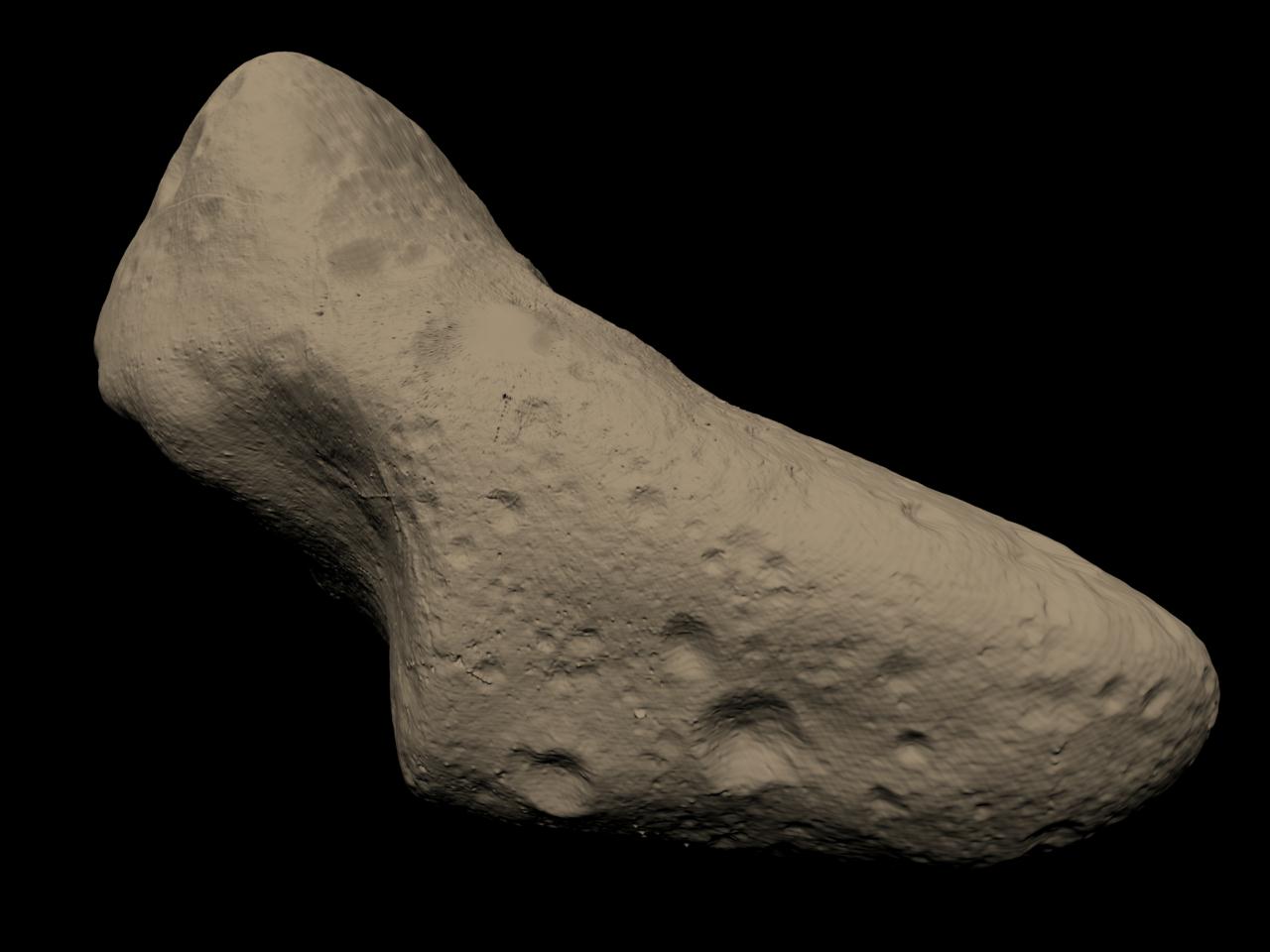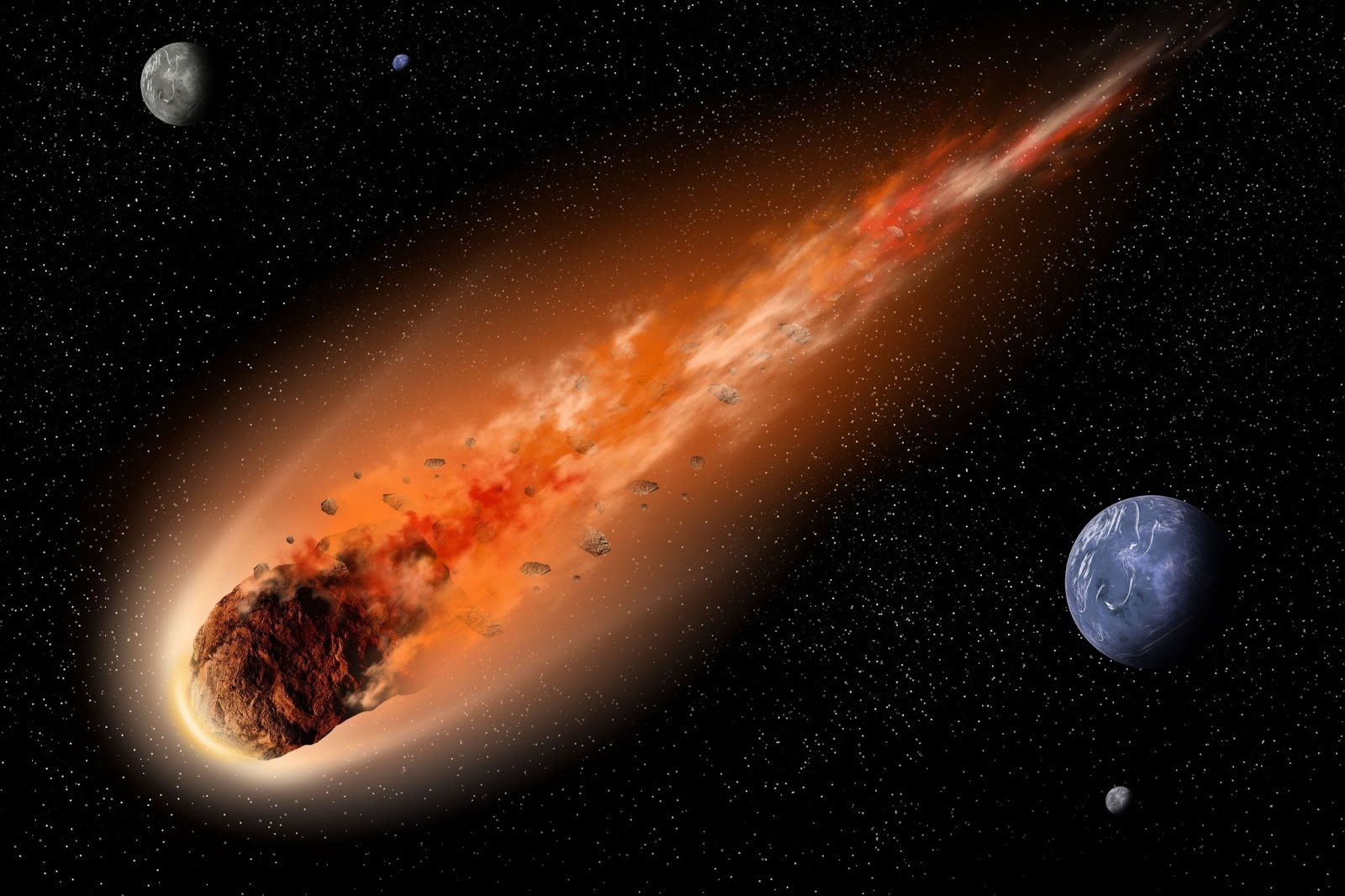ASTEROIDS
Asteroids are small, airless rocky worlds revolving around the sun. They are also known as planetoids or minor planets. In total, the mass of all the asteroids is less than that of Earth's moon. Many have hit Earth in the past, and more will crash into our planet in the future. This main asteroid belt holds more than 200 asteroids larger than 60 miles (100 kilometers) in diameter. Scientists estimate the asteroid belt also contains more than 750,000 asteroids larger than three-fifths of a mile (1 km) in diameter and millions of smaller ones.
TYPES OF ASTEROIDS

MATHILDE
Mathilde was discovered by Johanna Palisa on November 12, 1885 in Vienna, Austria. Mathilde is a very unusual asteroid. It has an extreamly long rotation peroid of 415 hours. Mathilde is also one of the blackest objects in the solar system, reflecting only 3% of the light that strikes it.
Mathilde is the largest asteroid to be visited by spacecraft. It is 52 kilometers (33 miles) in diameter and is approximately four times the size of Gaspra and two times the size of Ida.

EROS
On February 14, 2000 the NEAR spacecraft was successfully inserted into orbit around 433 Eros, becoming the first artificial satellite of an asteroid. Just over an hour later, NEAR pointed its camera at the asteroid and took the above picture from a range of 210 miles (330 km) above the surface. During the journey to Eros, NEAR flew within 1212 kilometers (750 miles) of asteroid Mathilde on June 27, 1997. NEAR was to continue onto Eros and obtain orbit in December of 1998; Eros is approximately 33x13x13 kilometers (20x8x8 miles) in size. It is the second largest near-Earth asteroid and spins on its axis once every 5 hours, 16 minutes. Eros exhibits a heavily cratered surface with one side dominated by a huge, scallop-rimmed gouge, and the opposite side by a conspicuous sharp, raised rimmed crater.

GASPRA
Gaspra (Asteroid 951) was discovered by Grigoriy N. Neujamin in 1916. Neujamin named Gaspra after a Black Sea. Gaspra was just another small asteroid that was given very little attention until it was discovered that the trajectory of the Galileo spacecraft would take it close to Gaspra. Gaspra was found to have an elongated shape with a rotational period of 7.04 hours.
On October 29, 1991, Galileo came within 1,600 kilometers (1,000 miles) of Gaspra. They passed each other at 8 kilometers (5 miles) per second. This was the first time that a spacecraft made a fly-by of an asteroid. Gaspra is an irregular body with dimensions of about 20 x 12 x 11 km (12.5 x 7.5 x 7 miles). Gaspra is classified as anS-type asteroid and is likely composed of metal-rich silicates and perhaps blocks of pure metal. Gaspra has probably been in its present state for the last 300 to 500 million years.

Ida is a heavily cratered, irregularly shaped asteroid in the main asteroid belt between Mars and Jupiter. Ida is placed by scientists in the S class (stony or stony iron meteorites). It is a member of the Koronis family. On August 28, 1993 Galileo came within 2,400 kilometers (1,500 miles) of 243 Ida, the second asteroid ever encountered by a spacecraft. At the time of the encounter, Ida and Galileo were 441 million kilometers (274 million miles) from the Sun.
Ida is about 56 x 24 x 21 kilometers (35 x 15 x 13 miles) in size, more than twice as large as Gaspra. It has a period of rotation of 4 hours, 38 minutes. Its density has been estimated to be between 2.2 and 2.9 grams per cubic centimeter. Its surface is heavily cratered suggesting that it has existed in its present form for at least a billion years. It is also considerably older than estimates for the Koronis breakup.
ASTEROIDS HIT THE EARTH PICTURES




No comments:
Post a Comment